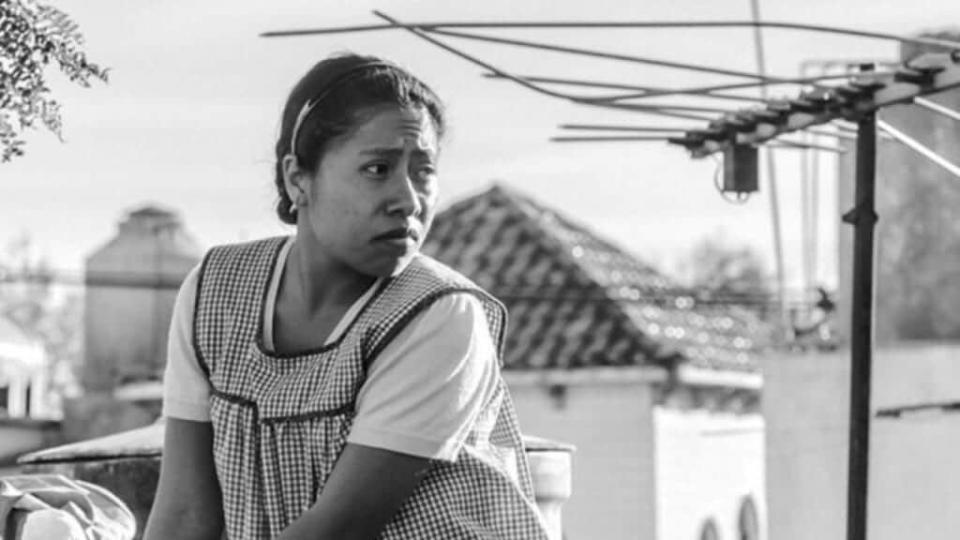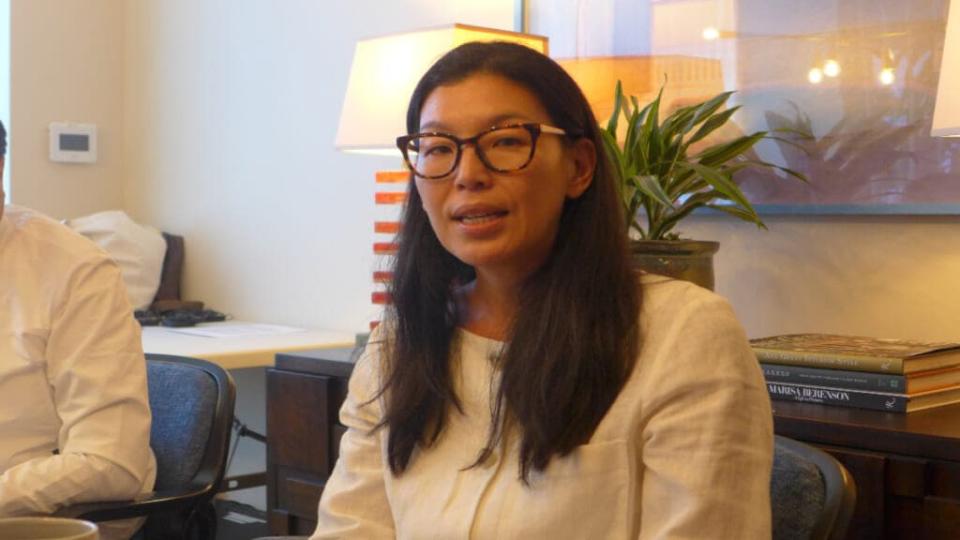Domestic Workers Call for Hollywood to Clean Up Its Act Depicting Their Lives on Screen
- Oops!Something went wrong.Please try again later.
When domestic worker Lucia Aguilar talks about Netflix’ hit series “Maid,” she does not echo the frequent criticisms found in publications, including mitú, TheWrap, questioning the choice of a white “maid” (Margaret Qualley) as the lead character– when, as mitú reported, 65% of U.S. cleaning women are Latinas whose stories often go untold.
No — Aguilar, a domestic labor activist and part-time nanny who serves as an adviser to Hollywood through the National Domestic Workers Alliance (NWDA), gets heated when she describes Qualley’s character, a struggling single mom, trying on the homeowner’s cashmere wraps, sampling expensive wine, taking a dip in the ocean-view hot tub and switching on the state-of-the-art AV system in a luxurious home when she’s finished her cleaning job.
Never, Aguilar said during a discussion that also included another entertainment industry adviser, Allen Galeon, who has provided in-home care for the elderly since 2008, and NWDA president Ai-jen Poo. The meeting took place last week in a West Hollywood office ahead of the release of a new study from NWDA and USC’s Norman Lear Center “Spotlighting Domestic Workers,” examining depictions of domestic workers in TV and movies from 1910-1920.
Also Read:
‘Maid’ Creator Molly Smith Metzler Signs Multiyear Deal With Netflix
Aguilar was not amused by Qualley’s character reaching into the fridge for an open bottle of chilled Sancerre while her employer was away for Thanksgiving. “I want to talk about the serious maid,” Aguilar told TheWrap via an interpreter in a lively discussion conducted in both English and Spanish. “It did not make me feel good. It degrades us as workers, making people think the (real-life) worker is going to do the same thing …I give it all to the work. Anything you do, you should do it well.”
According to the report, the United States employs more than 2 million domestic workers — NWDA’s preferred inclusive term for house cleaners, child and elder caregivers, nannies and au pairs. Recent movies and TV shows including “Maid,” the Fox drama “The Cleaning Lady” (about an immigrant Cambodian doctor who cleans crime scenes to survive while seeking medical treatment for her young son) and Alfonso Cuarón’s Academy Award-winning 2018 feature film “Roma,” as examples of projects featuring complex and sympathetic characters that just may be nudging the needle in Hollywood.
“Something transformational is happening out there, something actively is happening out there,” Poo said. She added that NWDA’s work with Hollywood depictions is an effective way to “shape the narrative” of the way domestic workers are perceived by employers and by doing so improve their working real-world working conditions through greater awareness.

For Aguilar, a native of Michoacán, Mexico, with a long history of work as a live-in house cleaner, cook and nanny in both Mexico and the U.S., that means helping employers see a domestic worker as “not a servant, but a human worker,” with their own families and personal needs to consider. She pointed out that few domestic workers get the paid vacation or sick days afforded to most 9-to-5 employees outside of the home setting.
Hollywood stories are often about people behaving badly, in all walks of life. But the panelists agreed that much is at stake when it comes to the portrayal of domestic workers — because depictions of these workers tend to be rare, stereotypical or one-dimensional, with the character rarely seen or relegated to the background.
Aguilar, who has spent the past nine months studying depictions of domestic workers for NWDA’s Pop Culture Council, said that she would like to see more representation of women of color and Indigenous women in domestic worker roles, but more importantly, she wants to see all such roles be well-rounded and sympathetic. Because the series goes deep into the personal life of Qualley’s Alex, Aguilar and the other panelists praised “Maids” despite that unauthorized sip of wine.
Poo pointed out that are in this case the casting reflects reality — in Washington State, where “Maids” is set, the majority of domestic workers are white (the figure is 46% nationwide). However, the report notes that in it analysis of 100 domestic worker characters over a century, white domestic workers were over-represented in the sample (69%).
Galeon, who along with his caregiving role and Hollywood consulting work is active in L.A.’s Pilipino Workers Center working in community organization and COVID relief for fellow immigrants, said that he has spent nearly 15 years working with the elderly in homage to his mother, who shares his home along with Galeon’s 6-year-old son. He is also adamant that men should be depicted as equally suited to caregiving as women are.
Galeon cited “Roma,” about the life of the live-in Indigenous housekeeper of a troubled upper middle-class family in Mexico, as a big step in the right direction. “Her life as a live-in maid was seen worldwide,” Galeon said. “She was a heroine, and she saved lives. She was the psychologist of the family.”

The report finds 47,000 mentions of domestic work in film and TV scripts since 1916 (the time frame includes perhaps the most critically-deconstructed of domestic worker portrayals, Hattie McDaniel’s Academy-Award winning turn as Mammy in 1939’s “Gone With the Wind”). Along with the numbers, the report analyzes the terms used to describe the workers (including pejorative terms such as mammy, servant and the help), as well as the amount of dialogue involving the characters and the subject of the dialogue.
The NWDA USC Annenbergstudy’s highlighted findings include:
• The majority of domestic worker characters depicted on screen were white (69%) and female (94%). • 25% were identified as immigrants in dialogue.
• 57% of domestic worker characters were house cleaners, 22% home care workers, and 21% child care workers.
• Child care workers and white domestic workers had the most dialogue.
• Domestic workers, and particularly non-white domestic workers, were portrayed as lower in competence than other characters (as indicated by language complexity).
• A qualitative analysis of dialogue spoken by domestic workers in small and medium roles found they discussed a variety of topics including romance with their employers and serious crimes.
• White domestic workers were over-represented in the sample (69% overall, 60% U.S. titles), while nonwhite domestic workers were underrepresented (13% Latine, 12% Black, 4% API). However, in the U.S. today, 42% of domestic workers are white, 29% are Latine, 22% are Black, and 6.3% are API (Wolfe et al., 2020).
• White domestic worker characters had more dialogue than characters of color.
Also Read:
Amy Sedaris: How Mr Rogers and Lawrence Welk Inspired My Retro Domestic Goddess
Like Aguilar and Galeon, the report concludes that quality of representation, with depth and substance, is more important than quantity. “Think twice before placing a domestic worker in the background of the frame, instead feature domestic workers in prominent and developed roles,” the document recommends.
While Aguilar and Galeon are cheerleaders for better representation, their own TV viewing habits don’t necessarily lean toward content featuring domestic workers. Aguilar is first and foremost a news junkie, with comedies ranking second.
And Galeon has an unexpected TV favorite from the past: late “champagne music” king Lawrence Welk, whom he applauds both as a positive role model for senior citizens as well as a longtime charitable supporter of the demographic Galeon chooses to serve.
“That’s beautiful,” Galeon said with a wide smile.
Read the complete NWDA USC Annenberg report here.
Also Read:
How ‘Maid’ Star Margaret Qualley Dove Into Motherhood Alongside Her Real-Life Mom

